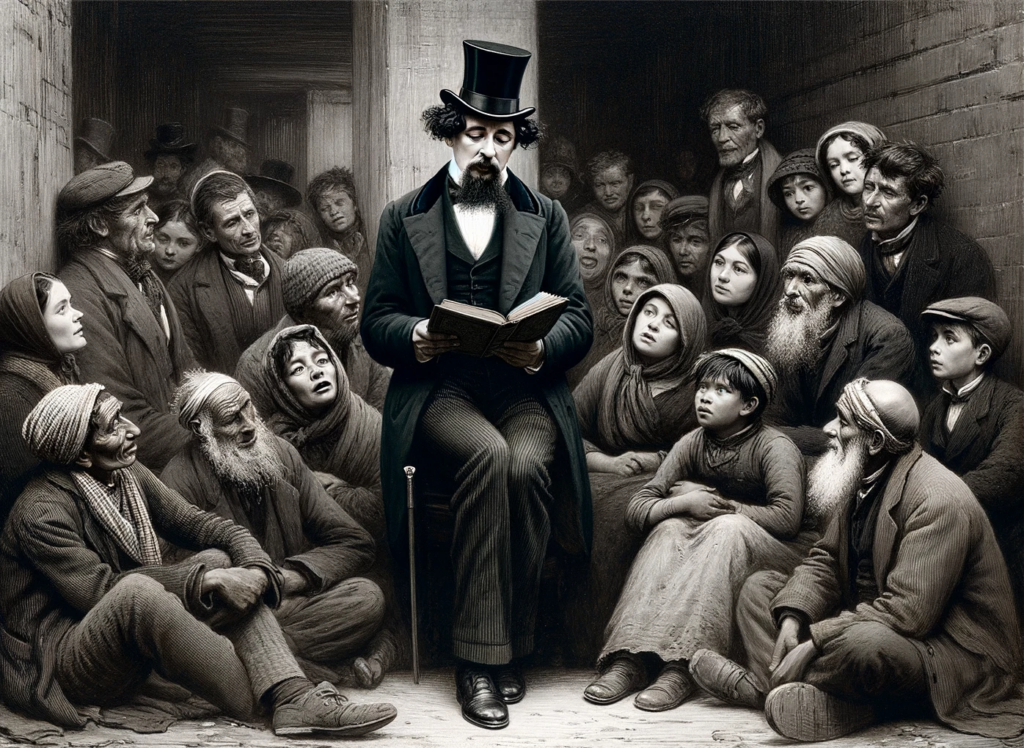Charles Dickens, a literary giant of the 19th century, achieved a level of popularity that transcended traditional barriers, even reaching the illiterate population. In a unique cultural phenomenon, those unable to read his novels individually found an ingenious solution – communal reading.
Dickens’s works became a shared experience among the illiterate, binding communities together. Individuals pooled their meager resources to hire a reader and then assembled to listen to the enchanting tales spun by the celebrated author. This communal approach not only brought the joy of storytelling to those who couldn’t read but also fostered a sense of camaraderie and shared cultural identity. This communal shindig wasn’t just about enjoying a good yarn – it was a glue that bound communities together.
What makes Dickens the people’s storyteller? It’s his knack for speaking to the hearts of diverse audiences. These communal reading fiestas weren’t exclusive; they were open to anyone with an eagerness to be part of a shared literary adventure. It’s the ultimate reminder that in the midst of letters and words, being seen, heard, and appreciated is the real show-stealer.
In a world where literacy was not universal, the act of collectively enjoying Dickens’s stories underscored the human need for connection and the power of storytelling to transcend educational limitations. This unique historical practice not only enriched the lives of the illiterate but also showcased the enduring impact of Dickens’s storytelling on society at large.
We are reminded of the profound influence literature can have on fostering community bonds. So, the next time you find yourself curled up with a Dickens classic, imagine the cheer of those enthusiasts, creating their literary ruckus. Dickens’s legacy isn’t confined to dusty pages; it’s alive in the hearts of those who, although unable to read, found solace and connection through the shared experience of his timeless tales.
Cheers to the Dickensian revelry that knows no literacy bounds!

